What color is this?
Natural walnut wood has been used in woodworking for a long time. The value of this type of wood is in its incredible texture with burls and burls, ease of processing, as well as strength and reliability. In addition, walnut wood does not crack, does not deform, and has antibacterial properties.
Previously, weapons were made of walnut, but today it is used to produce furniture, flooring, and wall decoration. The wood is expensive and is used only in the elite category. To reduce the cost of production, solid wood is replaced with veneer or even laminated chipboard.
When considering natural wood, it is impossible to describe the color of walnut in one word or even a sentence. The appearance of the color of the walnut is influenced by many factors: a certain variety, place of growth, even the level of moisture in the soil.
In general, the color range varies from light cream with a gray coating or caramel, to dark brown with a red or marshy undertone. Natural wood or veneer can also have warm yellow, cold green tints. The natural texture is richly decorated with dark veins, stripes and spots.
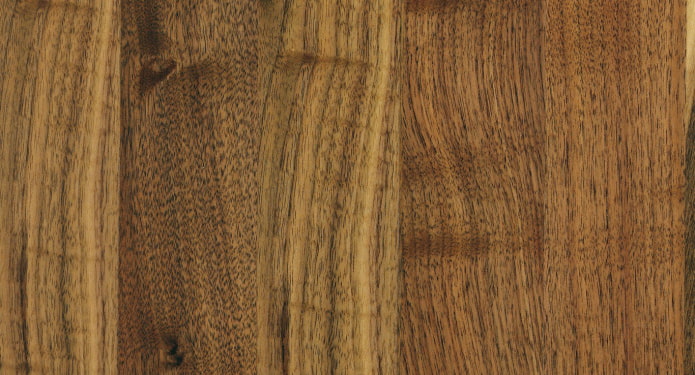
The photo shows a variant of walnut wood texture.
What shades are there?
The choice of walnut colors is replete with shades.
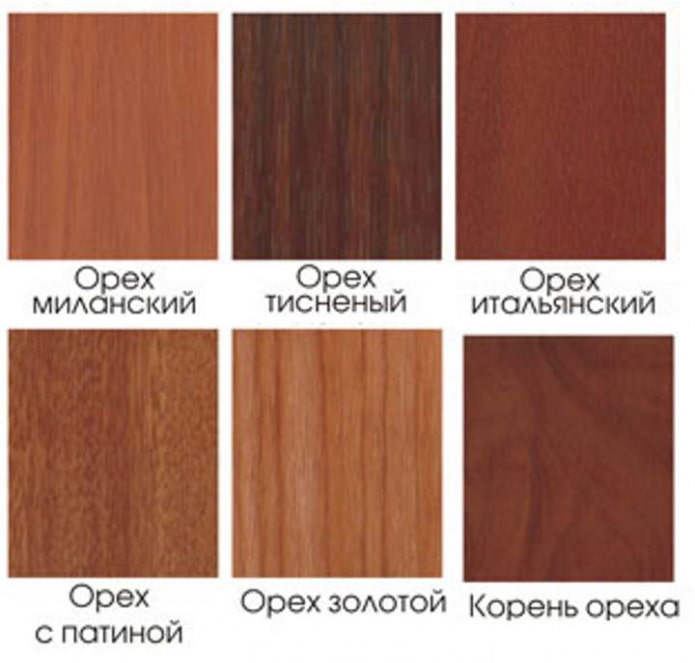
The most popular of them are:
Italian walnut color. A rich shade from honey to red-brown. The main difference between Italian walnut is its poorly defined texture. It does have veins, but they are not as dark or wide as in other varieties.
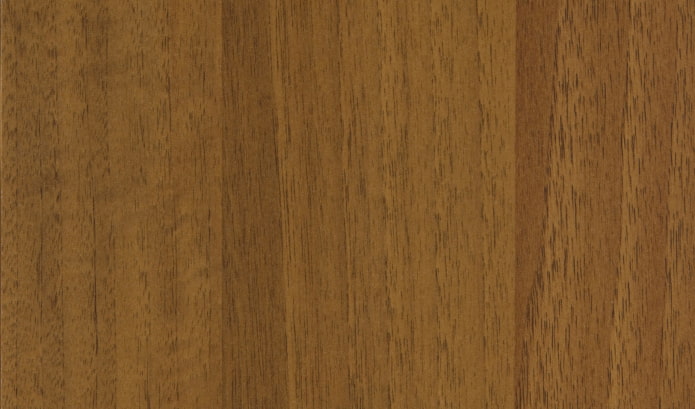
Milan walnut. Although Milan is a part of Italy, the shades of walnut wood in them are strikingly different. This light brown tone is more golden or even red, it is less saturated, but it also does not have a pronounced texture.
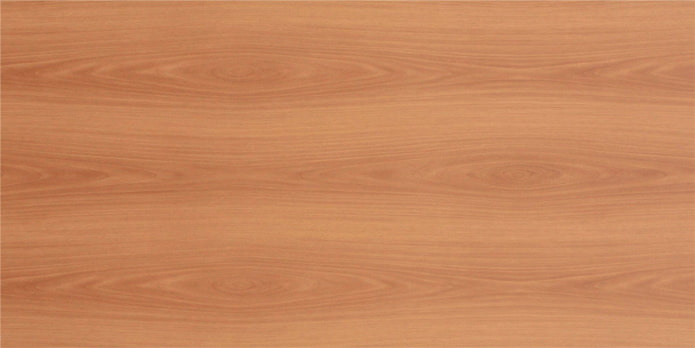
Spanish walnut. The palette and texture are strikingly different from the color of Italian walnut. The base is dark, rich, with a red tint. The veins are dark, chocolate, well defined.
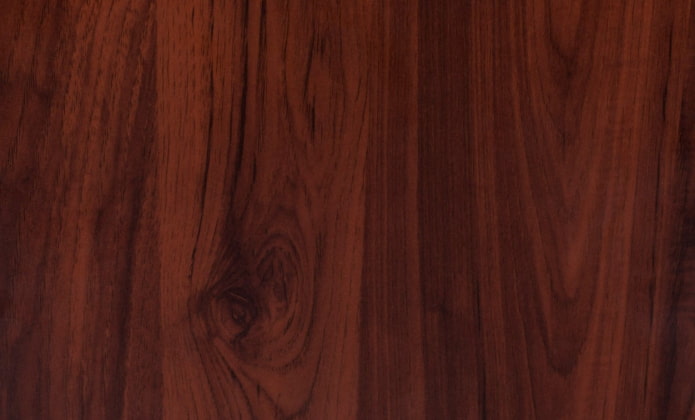
The photo shows red walnut wood
American walnut. In the USA, walnut is more beige with a delicate gray coating, although its texture is also clearly visible. Furniture in such veneer looks unobtrusive, but expensive.
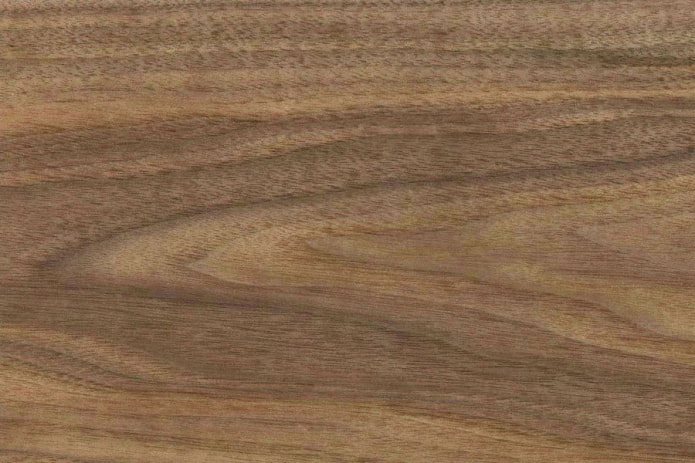
Embossed. The fifth color, walnut, combines chestnut and brown shades, or even burgundy. A noble “mahogany” color, can be used as an accent.
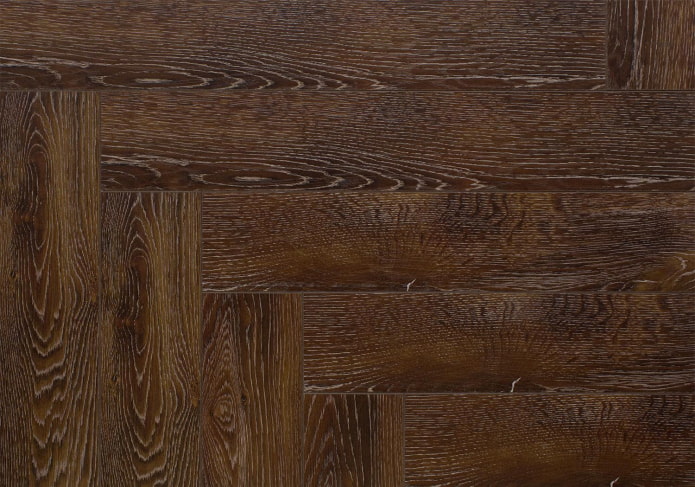
Golden. Of all the above-mentioned wood colors, this one is the warmest, even softest. Natural veneer really does give golden highlights in the light, but the film also looks decent.
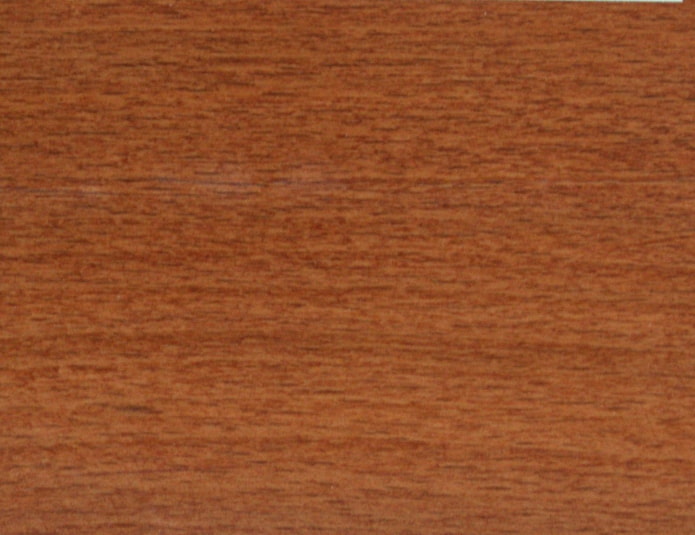
Walnut root. The root part differs primarily not in the range (it can be different, depending on the tree), but in the texture: here there are not veins or knots, but beautiful burls.
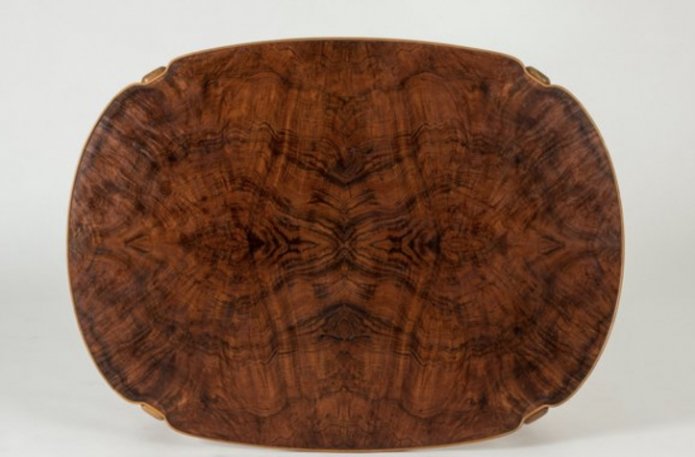
The photo shows the texture of the root with burls
What does it go with?
Such a bright color as walnut works best in a pair with the most neutral shade: for example, white. Cool snow or warm vanilla tones emphasize the texture of the wood, without drawing attention to themselves or competing with it.
With this combination of colors, both large elements, such as the floor, doors or kitchen facades, and small ones, such as niche decoration, small pieces of furniture (coffee table, bedside table), can be nutty.
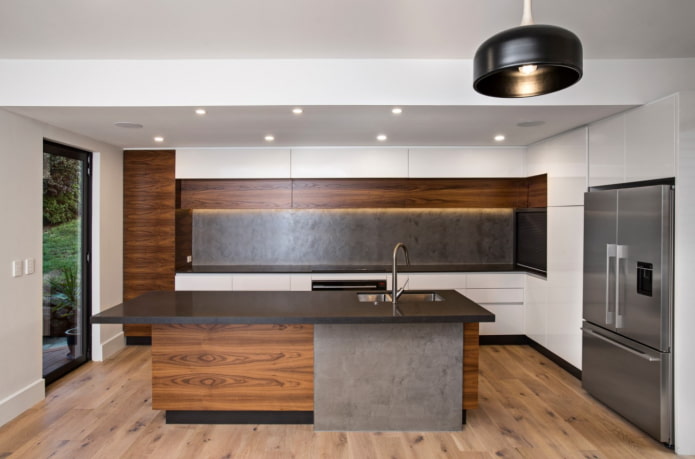
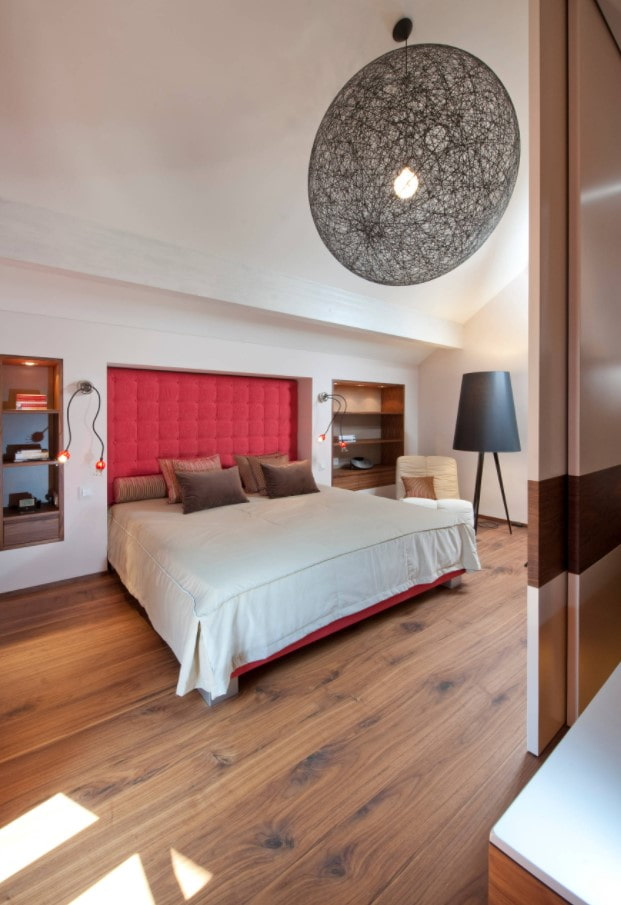
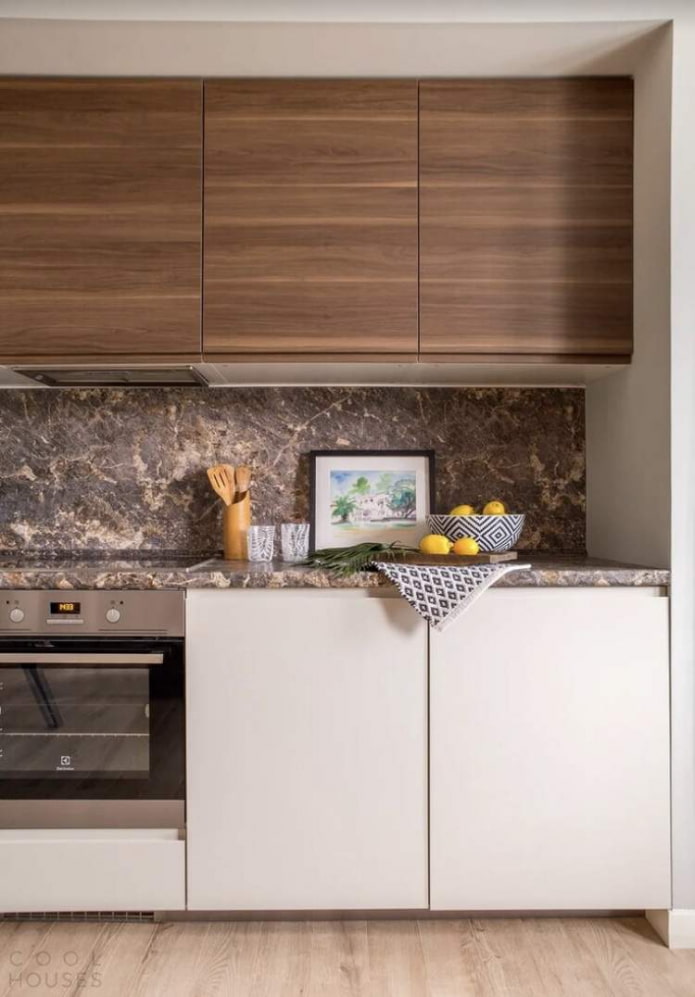
To ensure that the details made of different woods do not clash, designers recommend combining walnut-colored floors or furniture with something calmer and less textured. For example, dark uniform wenge, light beech or oak. Look how the wenge table and console set looks great on a walnut floor:
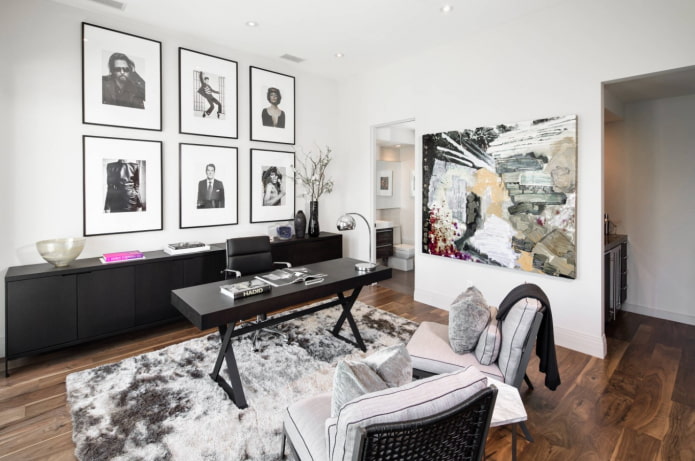
The photo shows a combination of wenge and walnut
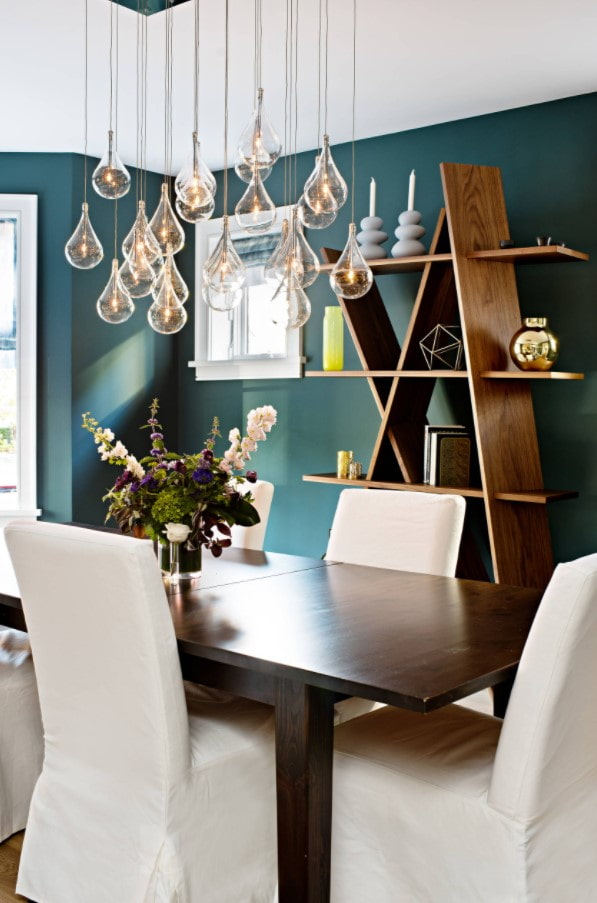
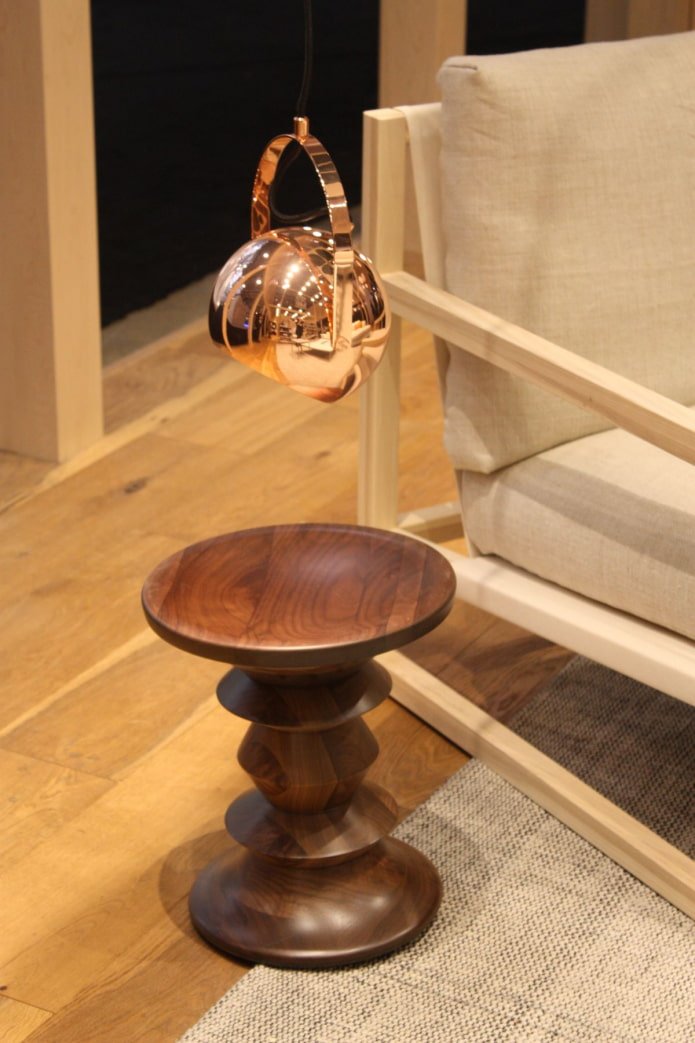
If before the designer is tasked with giving the space an atmosphere of uniqueness, walnut furniture in the interior is combined not with light tones, but with bright ones: green, blue, pink, lilac, red. With the first, natural wood or imitation looks as natural as possible: shades will suit from light green to emerald or coniferous.

Features of furniture in this color
Walnut-colored furniture is a classic. Thanks to its beautiful texture and neutral color, it looks amazing in the living room, bedroom, kitchen, hallway, study and even bathroom.
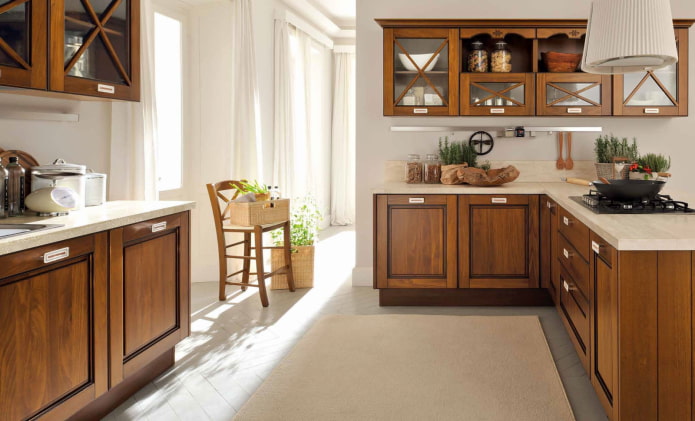
The style of the room also does not matter: walnut is good in a strict classical interior, a luxurious palace, a minimalist modern: everything depends not so much on the shade, but on the design of the facades.
To see for yourself, take a look at the photo of walnut color furniture below. Blind doors with unnoticeable handles on the cabinets give away the modern design, gold fittings and milling — the classic one.
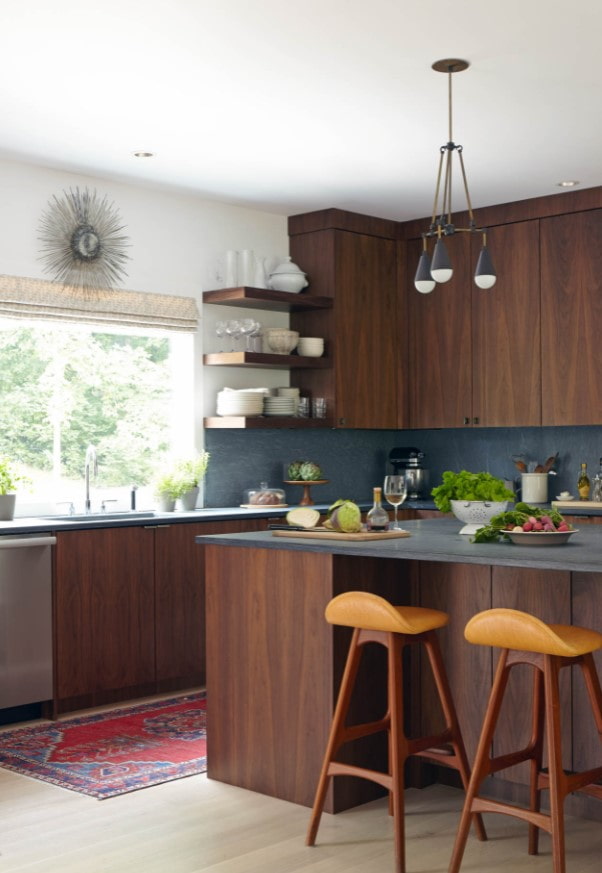
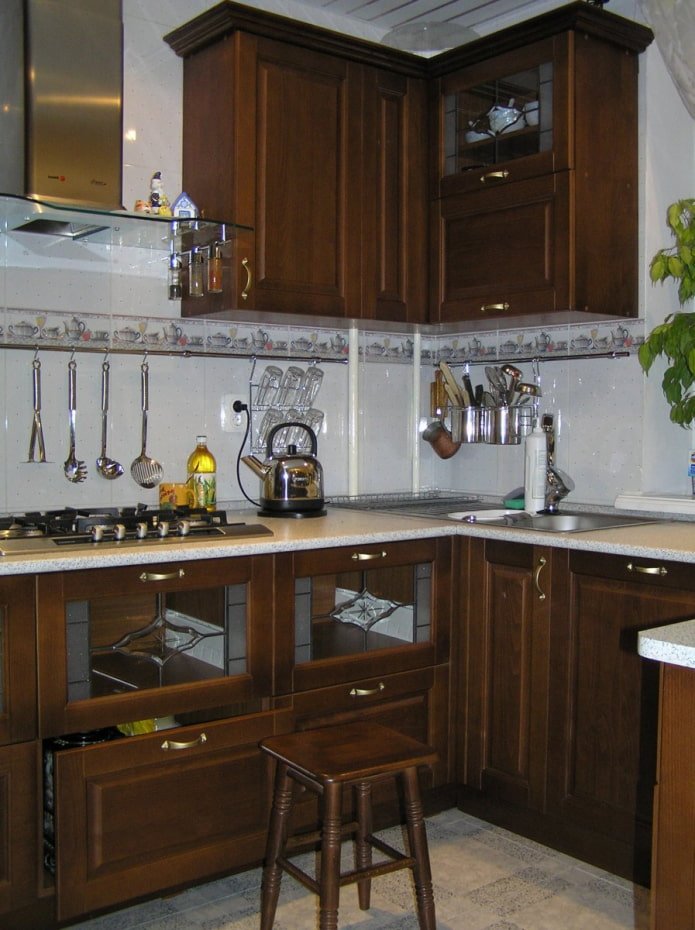
The traditional nature of walnut-colored furniture allows it to be used in sets not only in the kitchen: bed + cabinets or desk + shelving sets will not look “too much” even in small spaces. On the contrary, warm wood will add coziness to the room, making the atmosphere soft and homey.
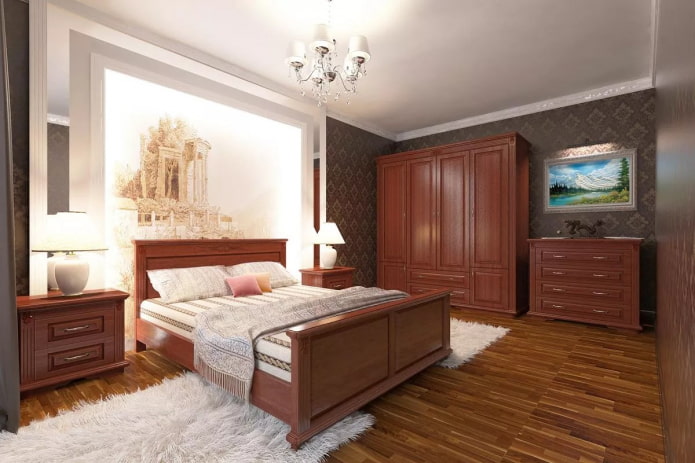
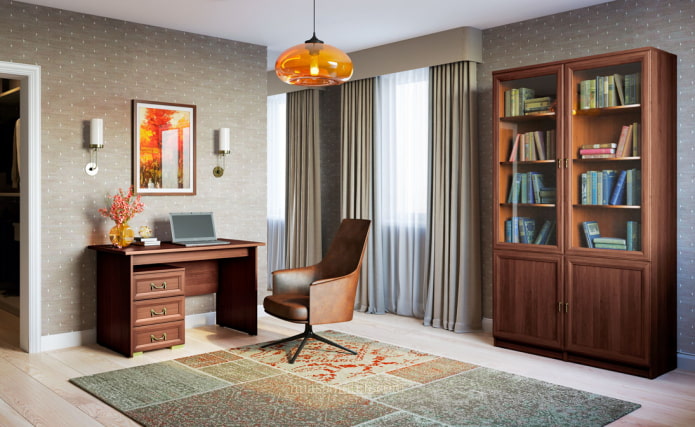
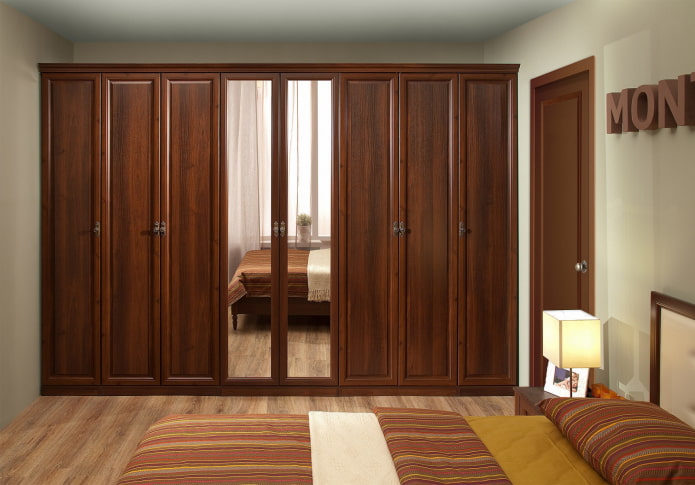
The only nuance is that when choosing walnut furniture, you need to carefully approach the selection of wallpaper, accessories.
As for the finish, it is better if it is as neutral as possible. For the warm color of the Italian wallnut furniture, choose a beige, cream, or creamy backing. Gainsboro, graphite, and diamond will suit the cold American style.
With decor, everything is not so limited: you can decorate the tree with ethnic elements (carpets, vases, masks, figurines), modern (frames, mirrors, flowerpots), and classic (books, flowers).
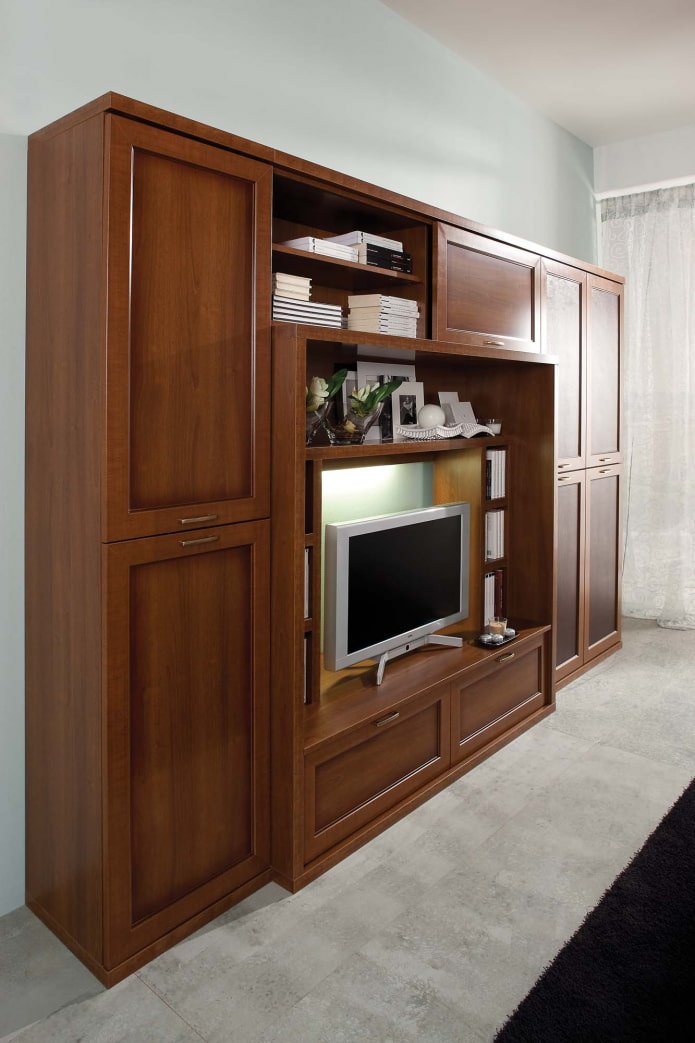
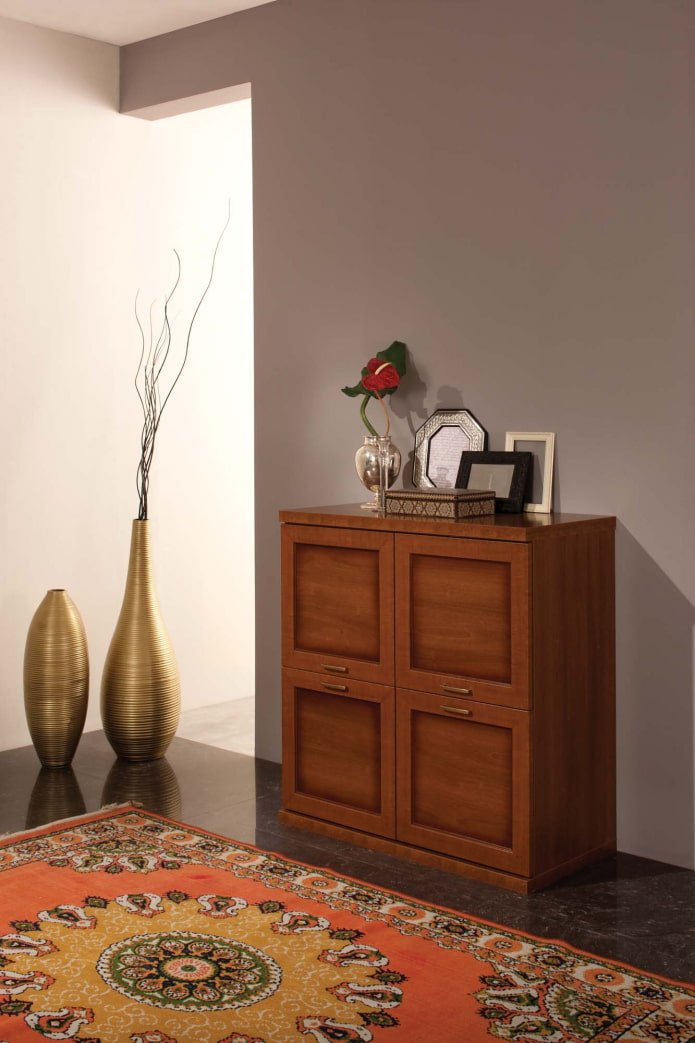
How does it look in decoration?
Most often, the color light walnut, medium or dark is found on floor: modern manufacturers produce not only veneered parquet boards, but also laminate, linoleum, quartz vinyl and even ceramic tiles with imitation walnut wood. The coating does not “rust”, it looks presentable. A noticeable pattern makes it more practical in comparison with single-color dark floors, on which any speck of dust is noticeable.
A wooden floor can be laid in a single contour, it will be appropriate in a living room, kitchen, bedroom. If you use laminate, to avoid damage, replace it with tiles near the entrance area in the hallway: plain or with Moroccan motifs will do.
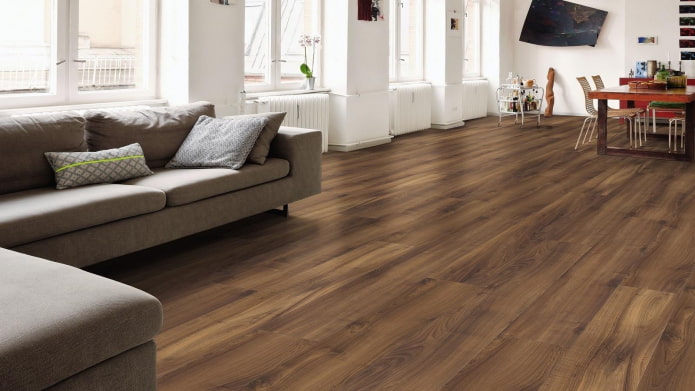
The photo shows a wooden floor in a studio
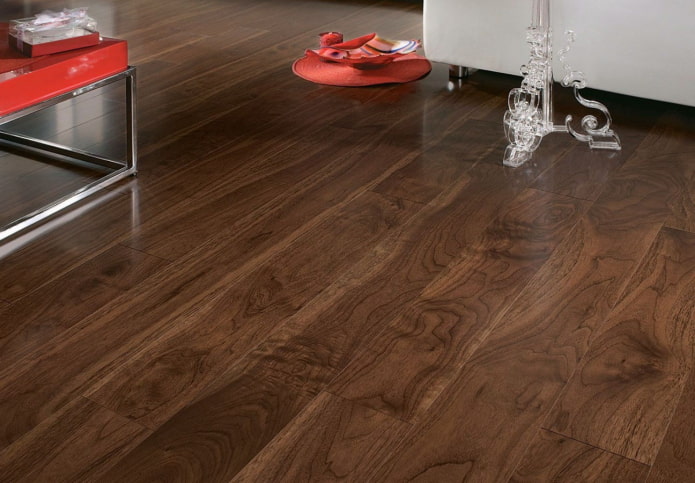
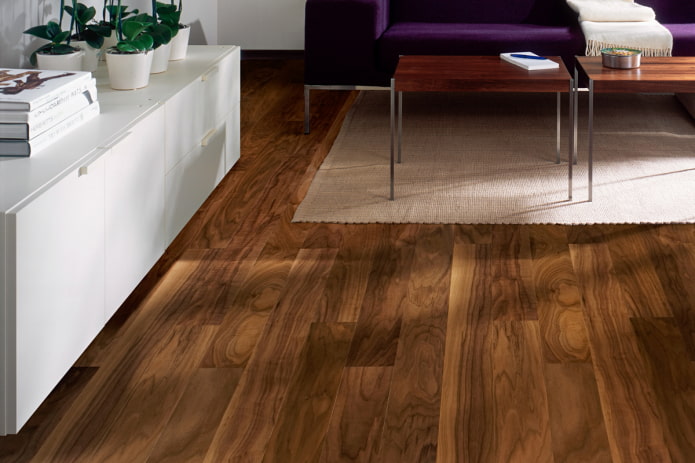
On walnut finish is rarely used on walls: and in vain. A wooden apron, for example, perfectly emphasizes a snow-white kitchen, makes it “not like everyone else’s”, adds a twist. Therefore, when choosing between two-color facades (white + wood) and single-color white facades with a walnut panel in the work area, feel free to order the latter.
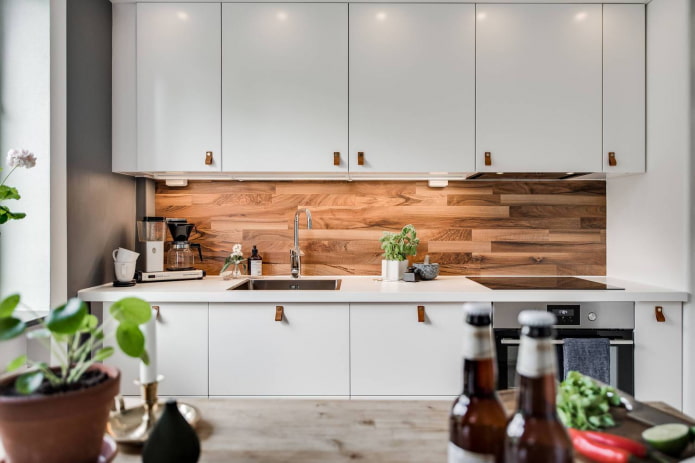
An apron is not the only option for wood on the walls. Walnut finish looks no less impressive in niches (especially in combination with the same white or anthracite). Laminate or imitation wall panels can also create an interesting texture, while protecting the surface in “dangerous” areas, such as the hallway or dining room.
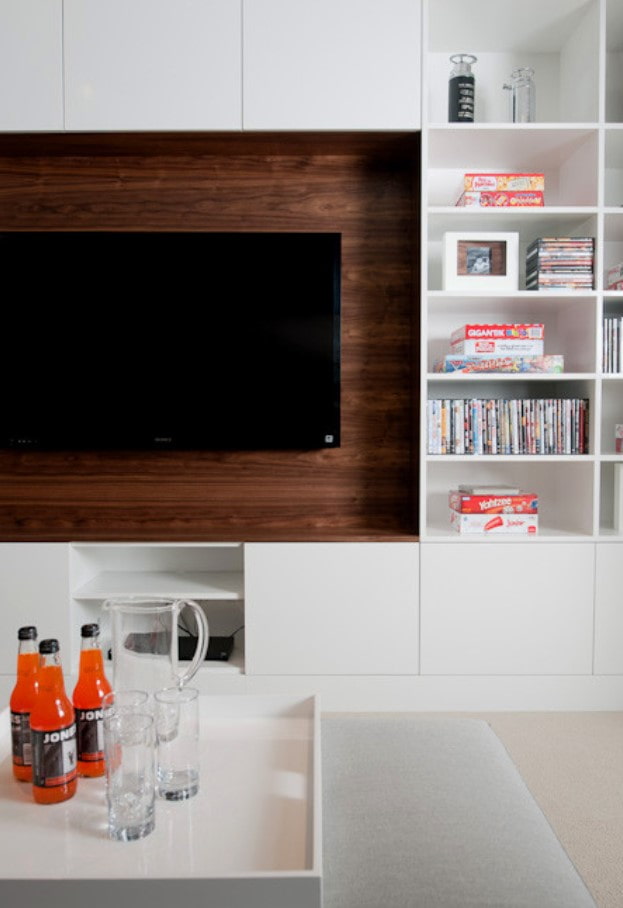
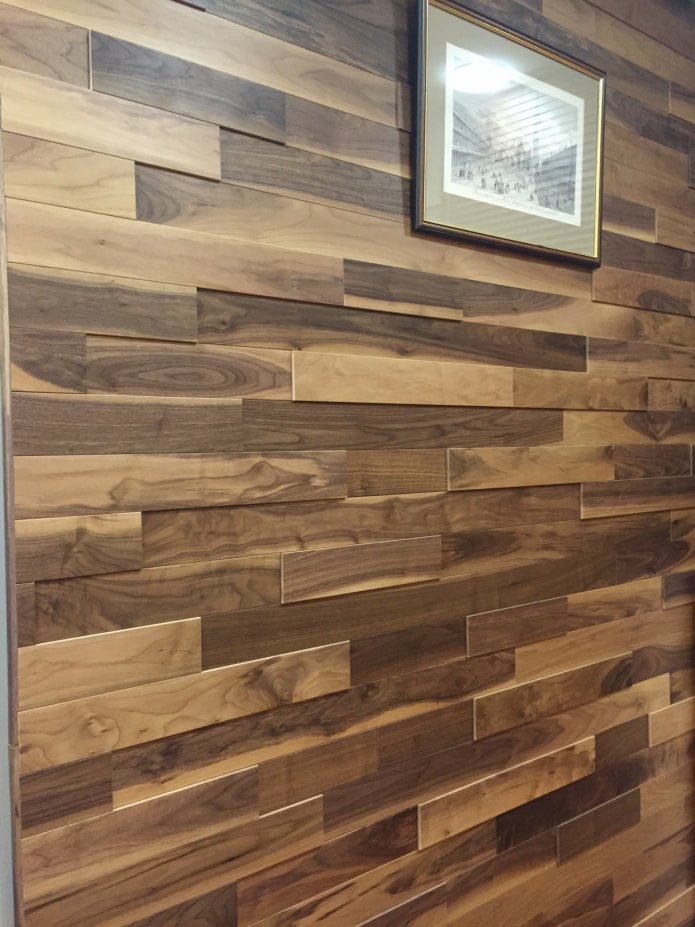
When neither the floor nor the walls are suitable, but you want to use walnut in the interior, take a closer look at the doors. Despite the fact that white interior doors remain at the peak of popularity, wood is an ageless classic that will never go out of fashion. Therefore, you can safely order door panels and door frame decoration from veneer – expensive, but presentable.
Advice! To highlight the doors in the interior, surround them with the most neutral finish possible – white ceilings, light walls, floors with a minimal pattern.
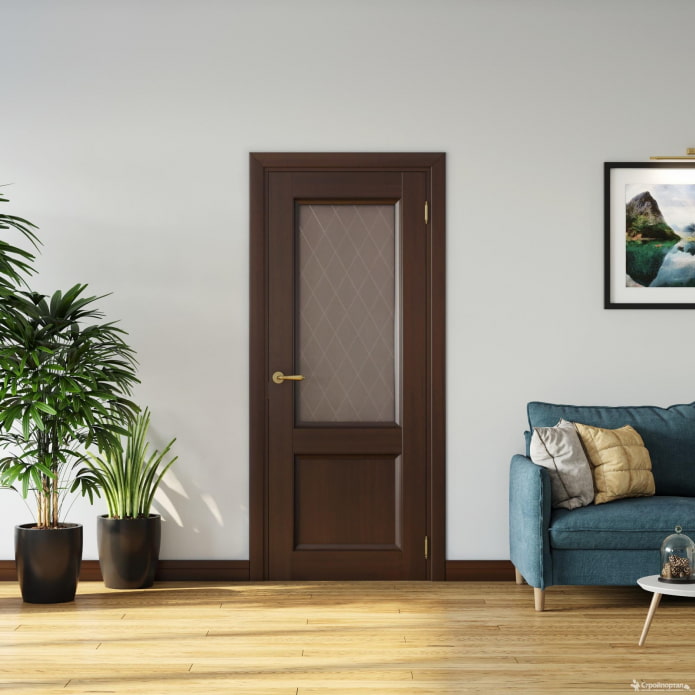
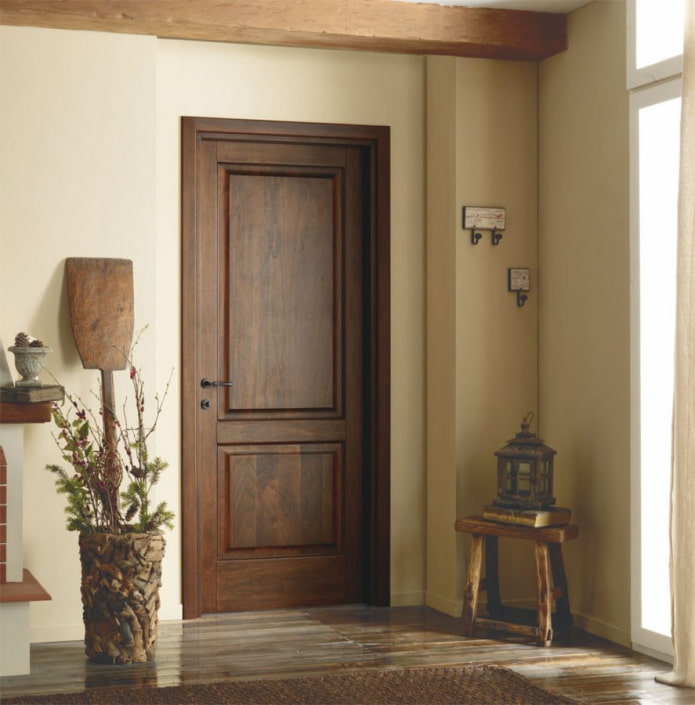
How does it look in the interior of the rooms?
Living room
In the living room, walnut is used on the floor, walls and, of course, in the furniture. Choose beautiful varieties of neutral shades – American, Italian, Spanish. The furniture can be complemented with glass inserts or single-color lamination – light or dark.
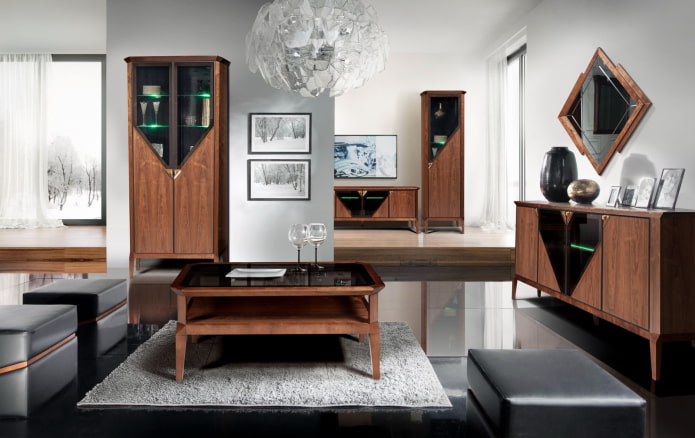
Kitchen
Wooden kitchens never go out of fashion, they look amazing both in strict minimalism and in ethnic Scandi or boho. In the first case, warm wood is diluted with cold plastic, glass, metal. In the second, they make it even warmer with the help of textiles: curtains, rugs, towels, napkins.
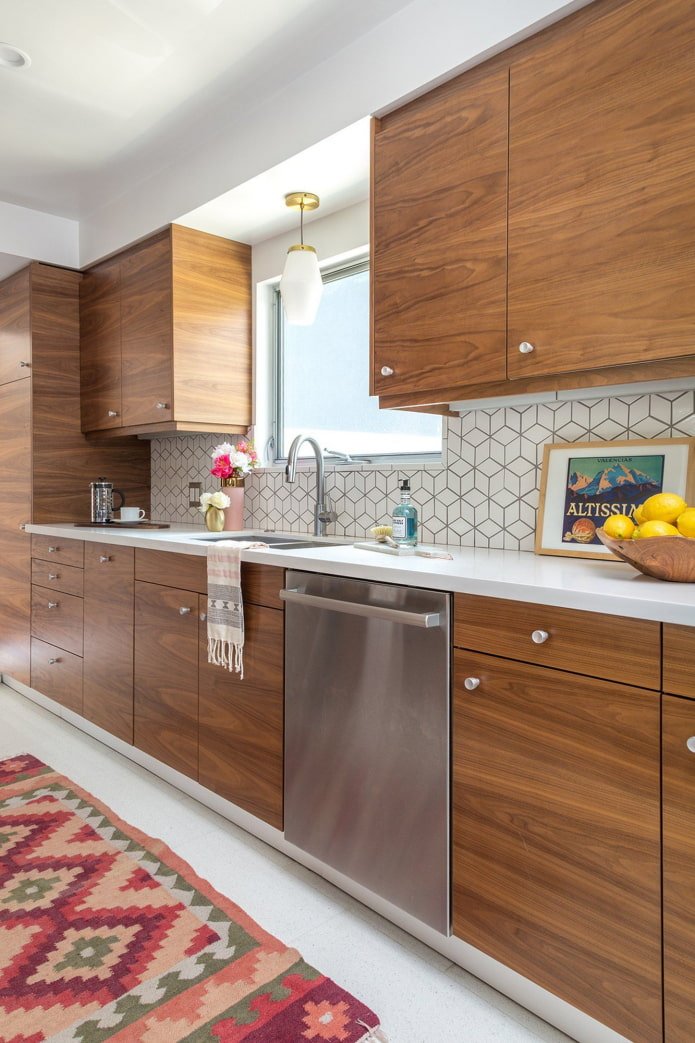
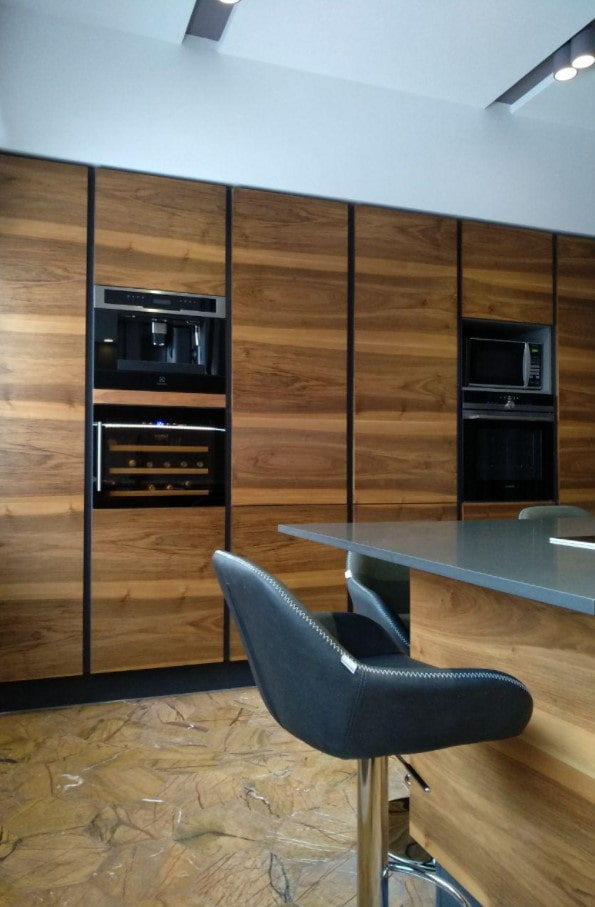
Bedroom
Wood in the bedroom is always a great idea. Even if you combine warm walnut with cold marble, concrete or metal, the room will still remain cozy and conducive to relaxation.
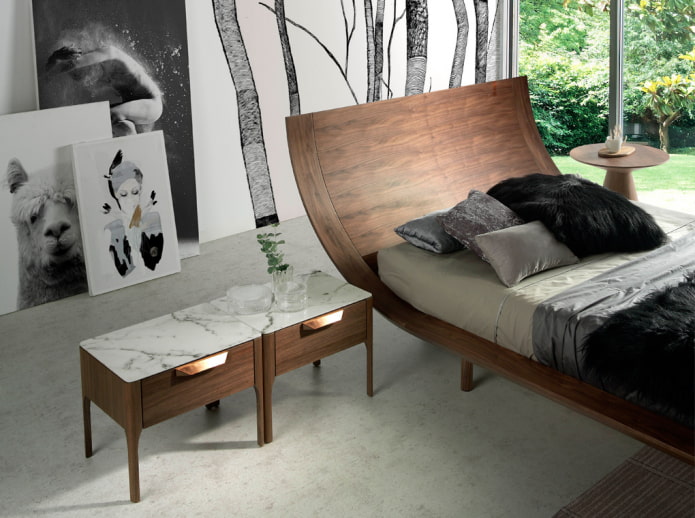
Hallway
Wood, especially dark or red, is rarely used in hallways, as it visually reduces the already small space. But if the goal is to add presentability to the entrance area, order a hallway in walnut.
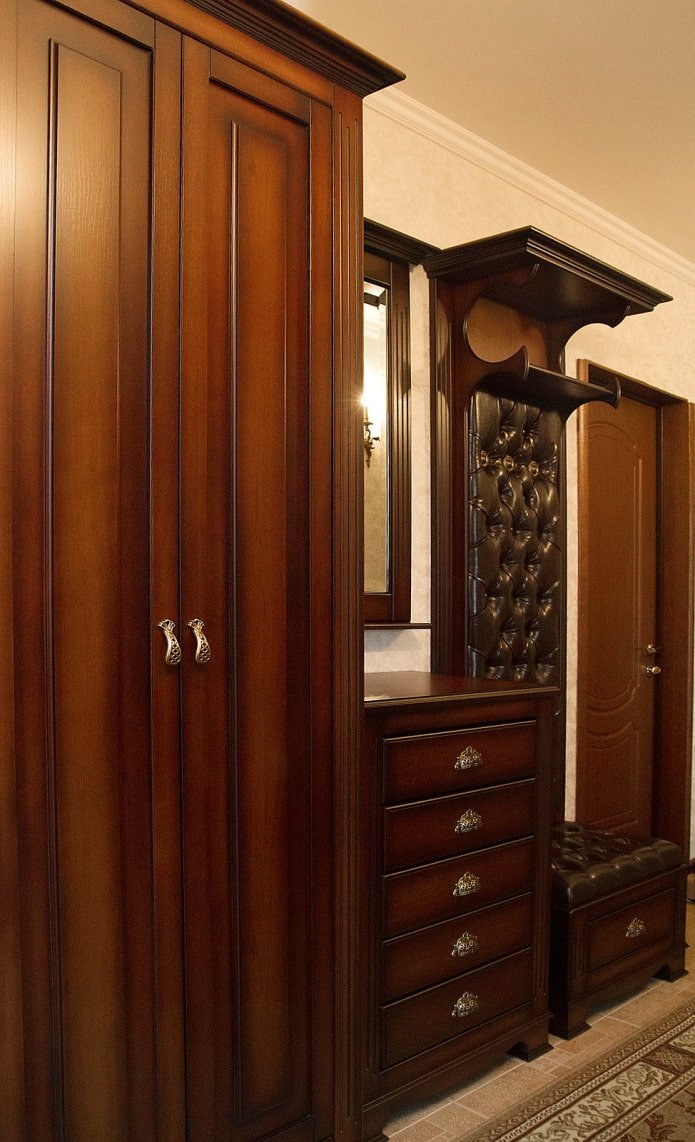
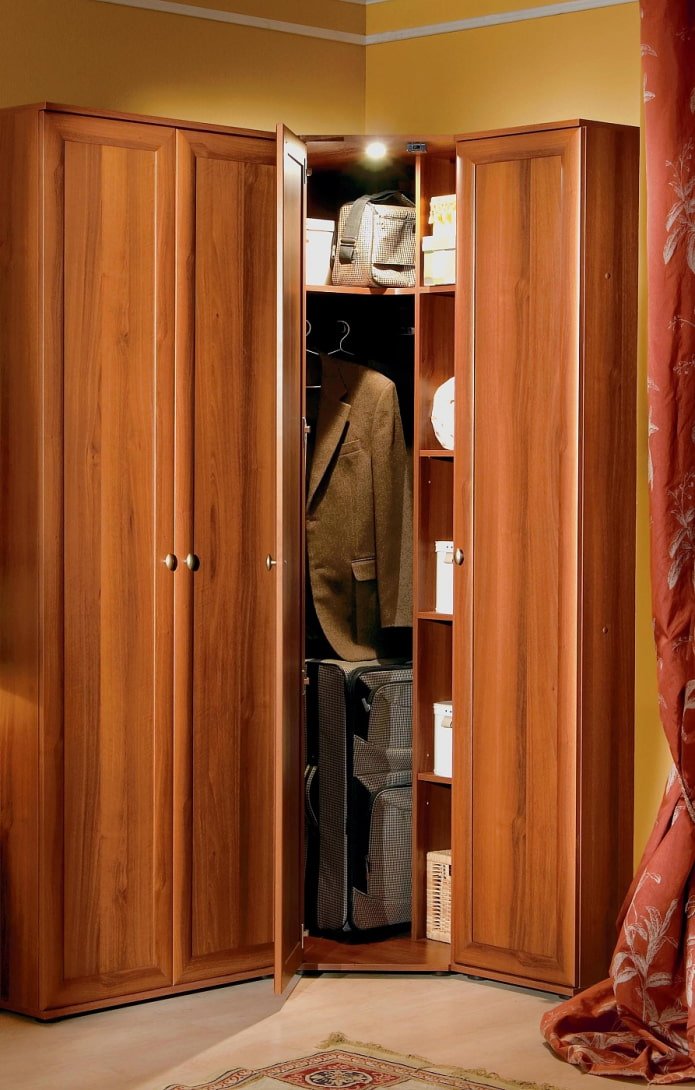
Office
The workspace can be furnished and decorated in walnut: in the photo, walls, doors, built-in wardrobes in the shade of golden walnut.
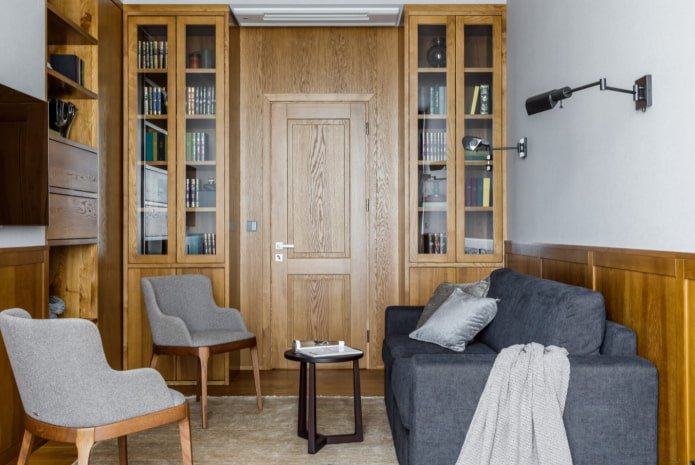
Children’s room
In a child’s room, medium-toned walnut will go well with white, as well as bright shades – yellow, red, blue, pink.
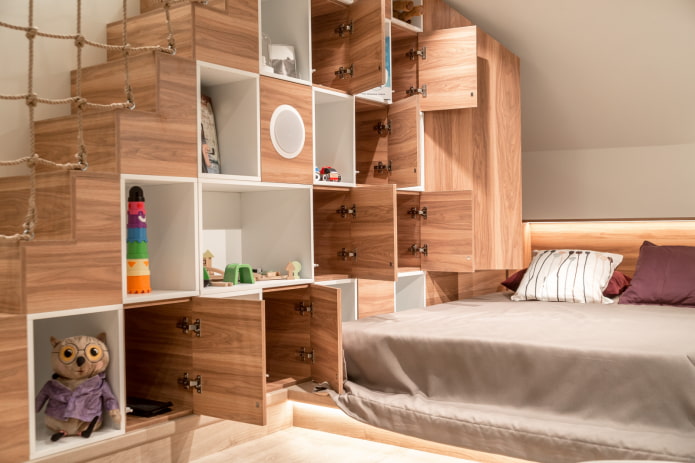
Walnut is a great alternative to oak or wenge. Neutral, yet bright and stylish at the same time – this is its versatility. Be sure to take a closer look at this color when you are doing repairs or choosing furniture.
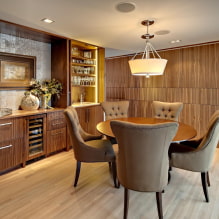
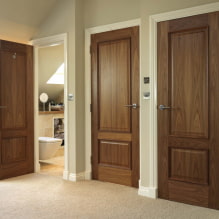
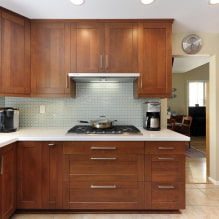
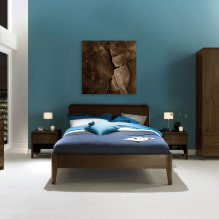
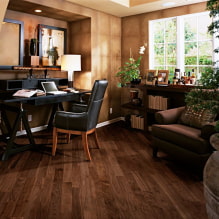
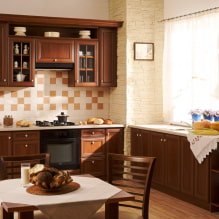
Now reading:
- Your Comprehensive Guide to Buying a Used Porsche Macan
- More than 90 creative ideas for plasterboard ceilings: photos and design examples.
- Pistachio Style: Design Ideas and Color Combinations (37 Photos)
- Your Ultimate Guide to Buying a Used Peugeot 807
- Patchwork tiles for kitchen and bathroom: design ideas and 50 inspiring photos